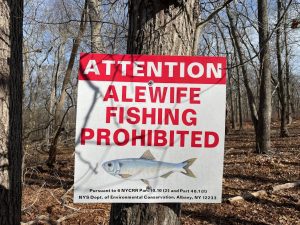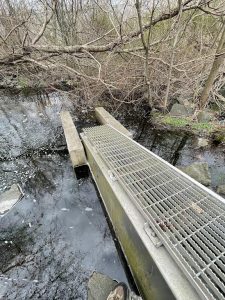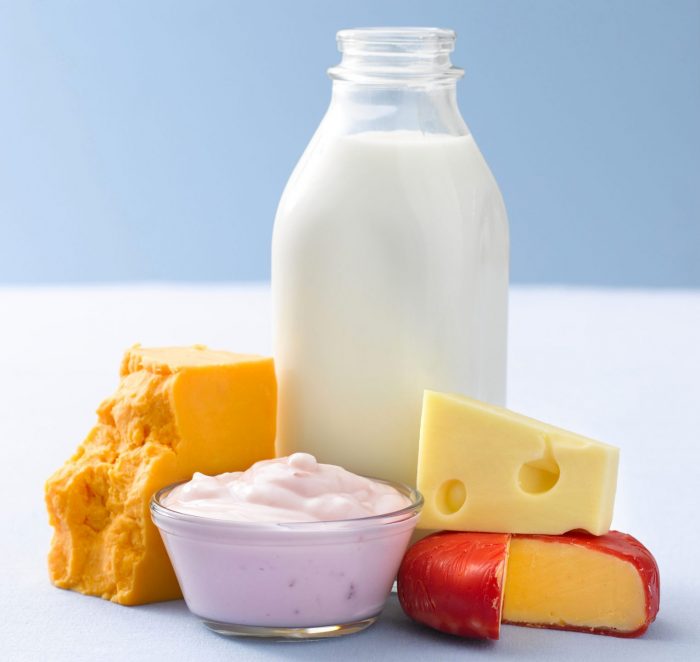Happy Mother’s Day from Times Beacon Record News Media!
The Wine Connoisseur: So, what is goat cheese?
By Bob Lipinski

Goat cheese, known as chèvre in French, is a classification of cheeses made worldwide from goat’s milk, which vary in style, appearance, and flavor. Goat’s milk cheese is made in a variety of shapes, such as cones, cylinders, disks, logs, ovals, pyramids, wheels, and “buttons.” By French law, cheese labeled as pur chèvre must be made entirely from goat’s milk. Cheeses made from a blend of goat and cow’s milk are labeled mi-chèvre.
Goat cheese costs more because of the relative scarcity of the milk: cows produce around six times as much milk as goats do. Hence, there is less cheese at higher prices.
Some goat cheeses are rolled in paprika or chili powder to give it a brick-red, colorful exterior. Others are wrapped in chestnut or grape leaves and dipped in brandy, marc, white wine, red wine, or olive oil. The outer chalk white surface is sometimes coated in ash, black pepper, or herbs.
Although the most common goat cheeses are soft and spreadable, others are semisoft, firm-textured, dry, and crumbly, and occasionally very hard, which can be grated. Some goat cheeses are smoked, while others are flavored with garlic, black pepper, curry powder, fennel, rosemary, and various herbs. Goat cheese varies in flavor from mild to acetic, tangy, sharp, nutty, grassy, earthy, barnyardy, or mushroomy.

Some recommended goat cheeses to try are Alicante, Banon, Bouton-de-Culotte, Bûcheron, Cabécou, Camerano, Capricette, Chabichou, Chevrotin, Crottin de Chavignol, Garrotxa, Ibores, Lormes, Montrachet, Pélardon, Picodon, Pyramide, Sainte-Maure, Valençay, and Ziegenkäse.
There are many red, white, and rosé wines that pair well with goat cheese. Some red wines are Cabernet Franc, Gamay, Grenache, Pinot Noir, Syrah, and Zinfandel. Some white wines are Chardonnay, Chenin Blanc, Gewürztraminer, Grüner Veltliner, Muscadet, Riesling, and Sauvignon Blanc. I especially enjoy goat cheese with a brut or blanc de noirs champagne, brut Prosecco, tawny port, a dry rosé, or a chilled glass of a fino (dry) sherry.
Some suggested wines to try are…
2019 Stephane Aviron Moulin-à-Vent “Vieilles Vignes” Beaujolais, France. Cranberry-colored with an aroma and flavor of blueberry, raspberry, plums, spices, and licorice. Dry and medium-bodied, with hints of roses.
2018 Murphy-Goode Pinot Noir, California. Ruby colored with an aroma of spicy black cherry and flavors of cranberry, plum, and cola with hints of cinnamon, earth, mint, and tea leaves.
2019 Greywacke “Sauvignon Blanc,” Marlborough, New Zealand. Straw-colored with a fresh aroma of citrus and herbs. Dry and medium-bodied with flavors of chamomile, grapefruit, passion fruit, white pepper, and stone fruit.
Bob Lipinski is the author of 10 books, including “101: Everything You Need To Know About Whiskey” and “Italian Wine & Cheese Made Simple” (available on Amazon.com). He consults and conducts training seminars on Wine, Spirits, and Food and is available for speaking engagements. He can be reached at www.boblipinski.com OR [email protected]
Photo of the Week: Lilacs and Mother’s Day
Fred Drewes of Mount Sinai submitted this lovely photo on May 3. He writes, “The lilac shrubs in my yard have bloomed in time for Mother’s Day for 53 years. I’ve had the pleasure to cut bouquets and present these fragrant flowers to mothers of my life. Cutting lilacs from my own yard and presenting them to “Mom” makes the day a special celebration, as it should be.”
Send your Photo of the Week to [email protected]
WMHO’s Summer of Science returns
This summer, the Ward Melville Heritage Organization (WMHO)’s Summer of Science returns to the Edwin Ernst Marine Conservation Center at West Meadow in Stony Brook. These open-air outdoor programs emphasize hands-on exploration of plant and animals species along the shoreline, student driven research projects, and scavenger hunts to compare & contrast the marsh and sandy beach habitats.
Salt Marsh Explorers (ages 6 to 9) runs from July18 to 22 and Salt Marsh Detectives (ages 10 to 12) runs from Aug. 15 to 19 from 10 a.m. to 1 p.m. Salt Marsh Scientists (ages 13 to 17) runs from Aug. 1 to 5 from 10 am. to 2 p.m. Registration is required for these programs. Depending on the program, cost per child is $275 to $325.
To learn more about Summer of Science programs, register your child, and to learn more about the WMHO, call 631-751-2244.
Nature Matters: Alewives and Eels – Part 1
By John L. Turner
This is part one of a two-part series on a remarkable pair of fish.
Each Spring, driven by impulses and guided by signals not fully understood, they migrate to Long Island to create the next generation. But unlike red-winged blackbirds, with their bright red shoulder patches and reedlike konk-a-ree calls, or Spring Peepers with their distinctive “sleigh bell” calls ringing from recharge basins and wetlands around Long Island, these migrating animals arrive quietly, their arrival and presence unknown to almost all Long Islanders. And while we may not be aware of their arrival, many other animals like bald eagles, ospreys, otters and great blue herons certainly do.
What animals might they be? Fish — or more precisely alewives (Alosa pseudoharengus) [meaning false herring], a species of river herring, and American Eel (Anguilla rostrata), one of nineteen species of snakelike fish with a worldwide distribution. Alewives return as adults to Long Island waterways, ranging from 9-12 inches long, while eels arrive as “babies,” just several months removed from their birth in the open ocean. Alewives are a shimmering silver in color with a distinctive dark spot behind the gill cover and are almost indistinguishable from their cousin, the blueback herring. When small, eel are translucent, gaining pigment as they mature.

These species are diadromous fish, “dia” meaning “through or across” and “dromous” meaning ”running,” a reference to the migratory habit of these fish moving between the two worlds they inhabit as part of their life cycle — freshwater and saltwater. Alewives and other river herring develop and mature in the salty waters of the North Atlantic, moving into freshwater systems to spawn, while eel typically develop in freshwater and spawn in salt water, in the famous stretch of the mid-Atlantic Ocean known as the Sargasso Sea.
To be more specific, biologists segregate diadromous fish into two other categories: anadromous fish like alewives, other river herring such as American Shad, striped bass, and salmon which mature in salt water but move upstream (“ana” meaning upward) to spawn in freshwater, and catadromous fish (“cat” meaning downward) such as American Eel which develops in freshwater but moves downstream to spawn in salt water.
Schools of alewives, three to four years old, seek out the freshwater stream of their birth, apparently finding their natal stream by its unique and distinctive chemical scent, although fishery biologists are not sure of the precise mechanism they use that allows them to find their way. Once these river herring find suitable habitat they spawn, depositing from tens of thousands to hundreds of thousands of eggs, and the adults soon leave to head back to the ocean. The eggs left behind hatch and the young develop over many weeks before, in mid-summer, heading out to open water too.
Cued by warming waters silvery, shimmering schools of alewives (and smaller numbers of their cousin, blueback herring) arrive in Spring — typically from late March to early May — congregating en masse at the mouths of many streams around Long Island. They then move inland and the “run” has begun! (For a wonderful account of alewife runs and their importance to colonial America, I encourage you to find a copy of The Run by John Hay, published in 1959).

Several hundred years ago the days of “alewife runs” were a time of great excitement for local residents as the fish provided them with an abundance of food at a critical time of year, but also as food for swine, and fertilizer for crops, most notably for “fish corn,” the practice of burying a piece of a fish (often the head) under the planted corn kernel. The rotting fish provided nutrients and minerals to the corn stalk as it grew, a practice originating with Native Americans.
Alewife runs were so important that some of the earliest wildlife laws in the United States were enacted to protect them. A very early law, passed in 1709 in Massachusetts stated: “That no wears [weirs], hedges, fishgarths, kiddles, or other disturbance or encumbrance shall be set, erected or made, on or across any river, to the stopping, obstructing, or straightening of the natural or usual course and the passage of the fish in their seasons, or spring of the year, without the approbiation and allowance first had and obtained from the general sessions of the peace in the same county”. Another law, adopted several decades later in 1741, related directly to the fish: “to prevent the destruction of the fish called alewives, and other fish.”
Their original abundance, especially when contrasted with current levels, was marveled at. John Waldman, a fisheries biologist whose book Running Silver, a wonderful treatise on migratory fish, has noted this abundance by numerous historical references. One account, from 1634, notes: “Alewives came up to the fresh rivers to spawn in such multitudes it is almost incredible, pressing up such shallow waters as will scarce permit them to swim.” Another quote nearly one hundred years later in 1728, noting alewife abundance in Virginia, says: “In a word, it is unbelievable, indeed, undescribable, as also incomprehensible, what quantity is found there. One must behold oneself.” The abundance of alewives today is a tiny and pale shadow of what once existed.
Unfortunately, many obstacles confront alewives and eels today on Long Island as they attempt to move upstream to spawn — not the aforementioned weirs, fishgarths, and kiddles of old, but dams, dams, and more dams (also other structures like poorly designed road and railroad culverts).
Constructed to channel water for the operation of sawmills, grist mills, and woolen mills, and to create impoundments for growing cranberries and harvesting ice, these dams and culverts have almost entirely foreclosed the ability of these fish to pass unimpeded in streams here. The stream at North Sea, Alewife Brook, draining Big Fresh Pond and emptying into North Sea Harbor is one of the very few remaining free-flowing, unimpeded streams remaining on Long Island (and one of the best places to visit to see alewife runs).
The response to solve the dam problem has been the construction of fish ladders or ramps on and around the obstacles. Fish ladders and rock ramps, angled so the fish can make it from the lower stream section to the higher water levels in the upstream impoundment, has proven to be an alternative and somewhat effective strategy for river herring to gain access to spawning areas. To assist eels, pegged boards or tangled rope netting have been deployed which the young eels can wriggle up.

Ladders and ramps have been placed on the main stems of the Peconic and Carmans Rivers, as well as the Swan River in East Patchogue, Massapequa Creek in Massapequa, and another at Betty Allen Park in Huntington. Two important ladders (due to the amount of freshwater the ladders will access) are being constructed — one on the Woodhull Dam in Riverhead providing access to an entire tributary of the Peconic River and another at the base of Mill Pond in Rockville Centre. A ladder is in the planning stage for Bellmore Creek which is expected to be installed in 2023.
A more effective but more controversial solution is dam removal. In many places in the United States dams have been removed but on Long Island this has not been the case as pond-side homeowners fear the loss of their physical and visual access to the water.
One possible area of success is at West Brook within Bayard Cutting Arboretum in Oakdale where the Seatuck Environmental Association has been advocating for the State Parks to not reconstruct the concrete dam that failed on the stream. The dam failure has opened up more than a mile long stretch of West Brook that heretofore was not accessible for migratory fish.
*Part two of this series will appear in the issue of May 12.
A resident of Setauket, John Turner is conservation chair of the Four Harbors Audubon Society, author of “Exploring the Other Island: A Seasonal Nature Guide to Long Island” and president of Alula Birding & Natural History Tours.
Medical Compass: What prevents fracture risk?
Revisiting dairy, calcium and vitamin D
By David Dunaief, M.D.

The prevalence of osteoporosis in the U.S. is increasing as the population ages, especially among women. Why is this important? Osteoporosis may lead to increased risk of fracture due to a decrease in bone strength (1). Hip fractures are most concerning, because they increase mortality risk dramatically. In addition, more than 50 percent of hip fracture survivors lose the ability to live independently (2).
That is what we know. But what about what we think we know?
The importance of drinking milk for strong bones has been drilled into us since we were toddlers. Milk has calcium and is fortified with vitamin D, so milk could only be helpful, right? Not necessarily.
The data is mixed, but studies indicate that milk may not be as beneficial as we have been led to believe. Even worse, it may be harmful. The operative word here is “may.”
We need Vitamin D and calcium for strong bones, but do supplements help prevent osteoporosis and subsequent fractures? Again, the data are mixed, but supplements may not be the answer for those who are not deficient.
Let’s look more closely at what the research tells us.
Milk and dairy
The results of a large, observational study involving men and women in Sweden showed that milk may actually be harmful (3). When comparing those who consumed three or more cups of milk daily to those who consumed less than one, there was a 93 percent increased risk of mortality in women between the ages of 39 and 74. There was also an indication of increased mortality based on dosage.
For every one glass of milk consumed there was a 15 percent increased risk of death in these women. There was a much smaller, but significant, three percent per glass increased risk of death in men. For both men and women, biomarkers that indicate higher levels of oxidative stress and inflammation were found in the urine.
This 20-year study was eye-opening. We cannot make any decisive conclusions, only associations, since it is not a randomized controlled trial. But it does get you thinking. The researchers surmise that milk has high levels of D-galactose, a simple sugar that may increase inflammation and ultimately contribute to this potentially negative effect.
Ironically, the USDA recommends that, from 9 years of age through adulthood, we consume about three cups of dairy per day (4). Prior studies show milk may not be beneficial for preventing osteoporotic fractures. Specifically, in a meta-analysis that used data from the Nurses’ Health Study for women and the Health Professionals Follow-up Study for men, neither men nor women saw any benefit from milk consumption in preventing hip fractures (5).
In a 2020 meta-analysis of an array of past studies, researchers concluded that increased consumption of milk and other dairy products did not lower osteoporosis and hip fracture risks (6).
Reconsidering calcium
Unfortunately, it is not only milk that may not be beneficial. In a meta-analysis involving a group of observational studies, there was no statistically significant improvement in hip fracture risk in those men or women ingesting at least 300 mg of calcium from supplements and/or food on a daily basis (7).
The researchers did not differentiate the types of foods containing calcium. In a group of randomized controlled trials analyzed in the same study, those taking 800 to 1,600 mg of calcium supplements per day also saw no increased benefit in reducing nonvertebral fractures. In fact, in four clinical trials the researchers actually saw an increase in hip fractures among those who took calcium supplements. A weakness of the large multivaried meta-analyses is that vitamin D baseline levels, exercise and phosphate levels were not taken into account.
What about vitamin D?
Finally, though the data is not always consistent for vitamin D, when it comes to fracture prevention, it appears it may be valuable. In a meta-analysis involving 11 randomized controlled trials, vitamin D supplementation resulted in a reduction in fractures (8). When patients were given a median dose of 800 IUs (ranging from 792 to 2,000 IUs) of vitamin D daily, there was a significant 14 percent reduction in nonvertebral fractures and an even greater 30 percent reduction in hip fractures in those 65 years and over. However, vitamin D in lower levels showed no significant ability to reduce fracture risk.
Where does that leave us?
Just because something in medicine is a paradigm does not mean it’s correct. Milk and dairy may be an example of this. No definitive statement can be made about calcium, although even in randomized controlled trials with supplements, there seemed to be no significant benefit. However, the patients in these trials were not necessarily deficient in calcium or vitamin D.
In order to get benefit from vitamin D supplementation to prevent fracture, older patients may need at least 800 IUs per day, which is the Institute of Medicine’s recommended amount for a population relatively similar to the one in the study.
Remember that studies, though imperfect, are better than tradition alone. Prevention and treatment therefore should be individualized, and deficiency in vitamin D or calcium should usually be treated, of course. Please, talk to your doctor before adding or changing any supplements.
References:
(1) JAMA. 2001;285:785-795. (2) EndocrinePractice. 2020 May;26(supp 1):1-46. (3) BMJ 2014;349:g6015. (4) health.gov. (5) JAMA Pediatr. 2014;168(1):54-60. (6) Crit Rev Food Sci Nutr. 2020;60(10):1722-1737. (7) Am J Clin Nutr. 2007 Dec;86(6):1780-1790. (8) N Engl J Med. 2012 Aug. 2;367(5):481.
Dr. David Dunaief is a speaker, author and local lifestyle medicine physician focusing on the integration of medicine, nutrition, fitness and stress management. For further information, visit www.medicalcompassmd.com.
A TALE OF REVENGE: Viking epic ‘The Northman’ hits theaters

Reviewed by Jeffrey Sanzel
Writer-director Robert Eggers made his feature debut with the slow-burn horror film The Witch (starring Anya Taylor-Joy). He followed this up with the slow-burn horror fantasy The Lighthouse. While audiences had mixed reactions, he received critical acclaim for both. His newest work, The Northman, is his most accessible and certainly most commercial.
The story begins in 985 AD. Young Prince Amleth’s (Oscar Novak) father, King Aurvandill War-Raven (Ethan Hawke), returns from battle and is murdered by his half-brother, the bastard Fjölnir (Claes Bang). Fjölnir takes the throne and abducts Aurvandill’s queen, Gudrún (Nicole Kidman).
If the plot sounds vaguely familiar, there is no surprise as it draws from the same source as Hamlet. Shakespeare derived his play from the legend of Amleth, preserved by the 13th-century chronicler Saxo Grammaticus in Gesta Danorum and retold in the 16th century by François de Belleforest.
And while the two works share DNA, tonally and stylistically, they are opposing forces. The Northman is a film of great violence and fewer words. Eggers relies on strong and effective visuals rather than dialogue to tell his story. The screenplay (written in collaboration with the Icelandic poet, novelist, and lyricist Sjón) presents a universe of blood and blood oaths, visions and vengeance. Amleth repeats, “I will avenge you, Father. I will save you, Mother. I will kill you, Fjölnir.” This litany becomes the watch cry of the adult Amleth (Alexander Skarsgård), whose sole purpose is to right this wrong.
After witnessing his father’s murder, Amleth flees. Vikings find the boy and raise him as a berserker. Years later, following a brutal Viking attack in the land of Rus, a seeress (Björk) tells the now grown Amleth he will soon have his revenge. Amleth learns that soon after the betrayal, Fjölnir was ousted. Amleth has himself branded a slave and sent to his uncle’s pastoral exile.
While being transported, he connects with Olga (Anya Taylor-Joy), a Slavic sorceress also captured in Rus. They form an alliance that becomes a bond. Eventually, she tells him, “You have the strength to break their bones; I have the cunning to break their minds.” On the Icelandic farm, Amleth discovers that his mother became Fjölnir’s wife and bore him a son, Gunnar (Elliot Rose).
The Northman is steeped in death—by arrow, axe, spear, knife, and sword. The savagery extends to slaughter, rape, and slavery. Eggers never shies from the perpetual devastation, embracing the primal existence. His hero is not the indecisive Hamlet but a warrior with a monomaniacal purpose.
Cinematically, the film is compelling and moves along, but always at the same brisk pace, both the film’s strength and weakness. The Northman never becomes “more than.” The characters never surprise because their actions alone define them, no less but no more. As they must live moment to moment, they are not individuals of nuance or subtlety, reflecting this unyielding world.
The cast uniformly delivers, but there are few complicated arcs because there is no subtext. The exception to this is Kidman’s queen, whose revelations shock Amleth. Kidman gives an unbridled and ferocious performance.
Skarsgård manages to find different if limited shades, but Amleth’s almost unwavering focus does not provide a great number of opportunities. He states later in the story, “Hate is all I have ever known. I wish I could be free of it.” Taylor-Joy (best known for her outstanding performance in The Queen’s Gambit) mines the limited role for as much variety as possible.
There are a few odd elements in an otherwise consistent realm. The accents seem to be rooted in some “once-upon-an-oldie-timey.” The CGI ravens that rescue Amleth seem out of step with Eggers’ hyper-reality. And in a world of dirt and mud, Olga manages to keep her nearly white dress and blonde tresses immaculate. While this could be symbolic, it is jarring.
Eggers’s attention to detail is the driving force that climaxes with a sword fight on the side of a volcano. Whether he is showing an attack, a close-up of a brooding Skarsgård calculating his next step, or drug-induced prophecies, Eggers offers a raw and brutal world in this predictable but powerful film.
Rated R, The Northman is now playing in local theaters.
Redefine Fitness opens second location in Town of Brookhaven

Redefine Fitness celebrated the grand opening of their new facility in Stony Brook Square, 1113 North Country Road, Stony Brook with a ribbon cutting on April 28.

The event was attended by members of the Three Village Chamber of Commerce, Town of Brookhaven Councilmember Jonathan Kornreich and Councilwoman Jane Bonner, staff, friends and family who came out to wish owner Anthony Amen good luck in his latest venture.
The new business offers a wide variety of small-group fitness programs including personal training, special needs training, post-rehab and more. It is the second location in Brookhaven Town. The first was opened in May of 2019 at 5507 Nesconset Highway in Mount Sinai.
“I am delighted to welcome Redefine Fitness to my district. Our community is pleased to have such a beautiful amenity here in our neighborhood. I’m so glad the successful model they established in Mt. Sinai is now coming to Three Village. Congratulations on your new location and I wish you the best of luck with all of your future endeavors,” said Councilmember Kornreich.
“I am happy to welcome the second Redefine Fitness to Brookhaven Town and I wish them the best of luck. I encourage everyone to stop in, say hello and take a look at this beautiful facility. It’s a great addition to Stony Brook,” added Councilwoman Bonner.
For more information, call 631-364-9027 or visit www.redefine-fitness.com.
CSHL’s Jessica Tollkuhn shows how estrogen creates physical differences in mouse brain region
By Daniel Dunaief
Estrogen plays an important role in the developing mouse brain. By facilitating connections to other brain regions, estrogen turns on genes that affect how the brain of male and female rodents develops and, down the road, how mice behave.
Cold Spring Harbor Laboratory Associate Professor Jessica Tollkuhn this week, along with graduate student Bruno Gegenhuber who recently earned his PhD, published research in the journal Nature that demonstrates how a specific region of the brain, called the bed nucleus of the stria terminalis, or BNST, responds to estrogen when the hormone receptor binds to DNA.
Male rodents convert a surge in testosterone into estrogen, which then triggers the development of more cells in the BNST than in female rodents. Later on in life, this can affect mating, parenting and aggression.
At this point, there is no data on how the BNST is masculinized in humans, although it is bigger in adult men than in women. Scientists also don’t know what the BNST does in humans. The BNST in humans is not much bigger than it is in mice.
On a broader scale, by understanding how estrogen shapes the developing brain differently in males and females, Tollkuhn hopes to discover the progression of behavioral disorders that are often more prevalent in one gender than the other. Boys have more neurodevelopmental disorders than girls, such as autism, language delays, dyslexia and attention deficit hyperactivity disorder, or ADHD. Girls, on the other hand, particularly after puberty, have twice the incidence of major depression compared to their contemporary male counterparts, Tollkuhn said.
Tollkuhn is part of a collaboration, funded by the Simons Foundation, to study autism. The CSHL researcher doesn’t believe autism originates in any particular brain region, describing it as a complex disorder with many causes.
“I do think that sex differences in brain regions such as the BNST can intersect with other genetic and environmental factors to increase vulnerability to developing certain symptoms in boys,” she explained.
In rodents, estrogen protects against programmed cell death. In the BNST and a few other brain regions, there are sex differences in cell death that are dependent on hormone exposure. A male mouse without exposure to estrogen would not have a larger BNST.
History of her research
Tollkuhn has been looking for estrogen receptor alpha in the brain since she started her post doctoral research at UCSF in 2007. The genome-wide targets of this receptor in breast cancer cells were first described in 2006.
Back then, the technology wasn’t good enough to capture estrogen receptor alpha binding in the small, sparse population of cells. These receptors, after all, aren’t in most brain cells.
The receptors for a hormone that plays such an important developmental role sit in the same place in males and females.
Tollkuhn’s assumption going into this study was that estrogen receptor alpha would have access to different genes in adult males and females, based on the different life histories of when the two sexes had prior estrogen exposure, which was transient in the developing male brain and fluctuated in females after puberty.
That, however, was not the case. Giving females and males the same hormones caused the genome to respond the same way.
“It’s really the differences of which hormones are present in the circulation that determines what genes are active,” she explained in an email.
Future studies
Tollkuhn is interested in the variation of hormones, receptors and gene responses between individuals within a single species and among various species.
She suggested that a spectrum of variability in sexual differentiation likely exists within and across species. The differences in the way these hormones and receptors shape individual development “is advantageous” because the plasticity in behaviors makes a species more resilient to subtle or dramatic changes in the environment, enabling an organism to alter its behaviors depending on internal states such as hunger, time of year, or place in a social hierarchy.
Tollkuhn would also like to know the genomic targets of androgen receptor, within the BNST and elsewhere. She would like to look at where estrogen receptors and androgen receptor are expressed in the developing human brain. She also plans to study estrogen receptor beta, which is “poorly understood even outside the brain.”
Studying these receptors and the genes they alter could enhance an understanding of cognition and mood, as well as measures of stress and anxiety.
Women with estrogen receptor positive breast cancer sometimes take a medication that blocks estrogen in the breast and in the brain. A side effect of this medicine, however, is that it causes women to have menopausal-type symptoms, such as disrupted sleep, thermoregulatory issues like “hot flashes,” and mood disorders.
Tollkuhn and Cassandra Greco, a graduate student at Stony Brook University, will investigate how different breast caner medications that target estrogen receptor alpha differentially affect its recruitment to the genome.
Tollkuhn plans to test the three most commonly prescribed treatments to see how they are affecting the brain and what they are doing to the estrogen receptor regulated genes in the brain.
She hopes one day to help develop a therapy with more specific targets that doesn’t have the same side effects.
Science origin story
When she was young, Tollkuhn liked reading books about biology, but didn’t discover her interest in research until she attended Mills College in Oakland, CA.
She got her first research experience working at biotech companies during her undergraduate studies. At that point, she learned that she was capable of doing challenging experiments.
In addition to continuing to read about a range of other research experiments, Tollkuhn enjoys the challenge of research.
“The joy of this job is that I get paid to ask questions that are interesting,” she said.
Shelter Pet of the Week: Chrysta
MEET CHRYSTA!
This week’s featured shelter pet is Chrysta, a 2-year-old domestic medium hair beauty, currently up for adoption at the Smithtown Animal Shelter.
Chrysta is a gorgeous and outgoing cat with luxurious whiskers. She is very affectionate when it suits her; the rest of the time she prefers to be admired from a respectable distance. She is playful and feisty and will need a home that understands she can be as spicy as she is sweet.
If you would like to meet Chrysta, please call ahead to schedule an hour to properly interact with her in a domestic setting.
The Smithtown Animal & Adoption Shelter is located at 410 Middle Country Road, Smithtown. Visitor hours are currently Monday to Saturday from 10 a.m. to 3 p.m. (Sundays and Wednesday evenings by appointment only). Call 631-360-7575 or visit www.townofsmithtownanimalshelter.com for more information..












